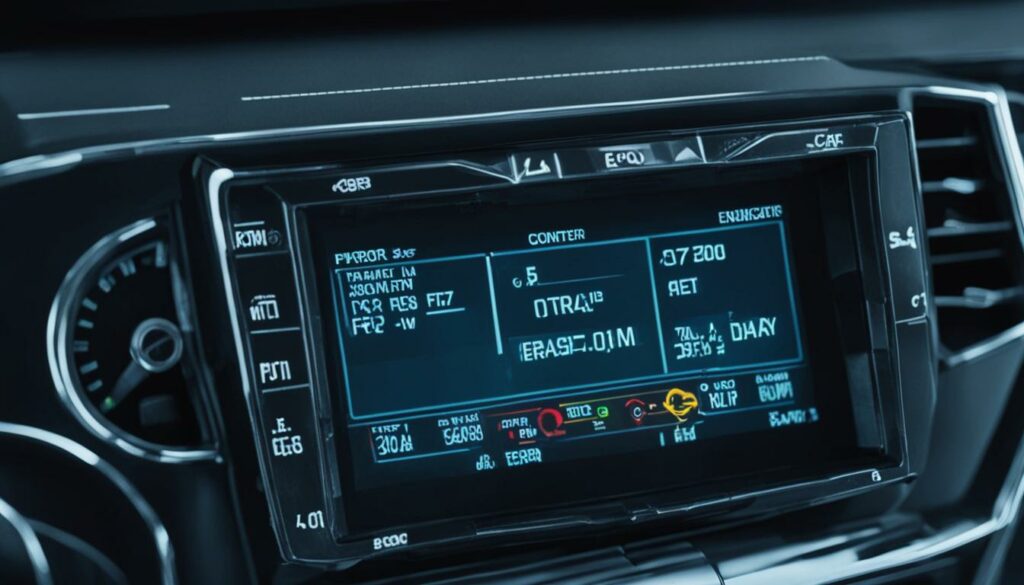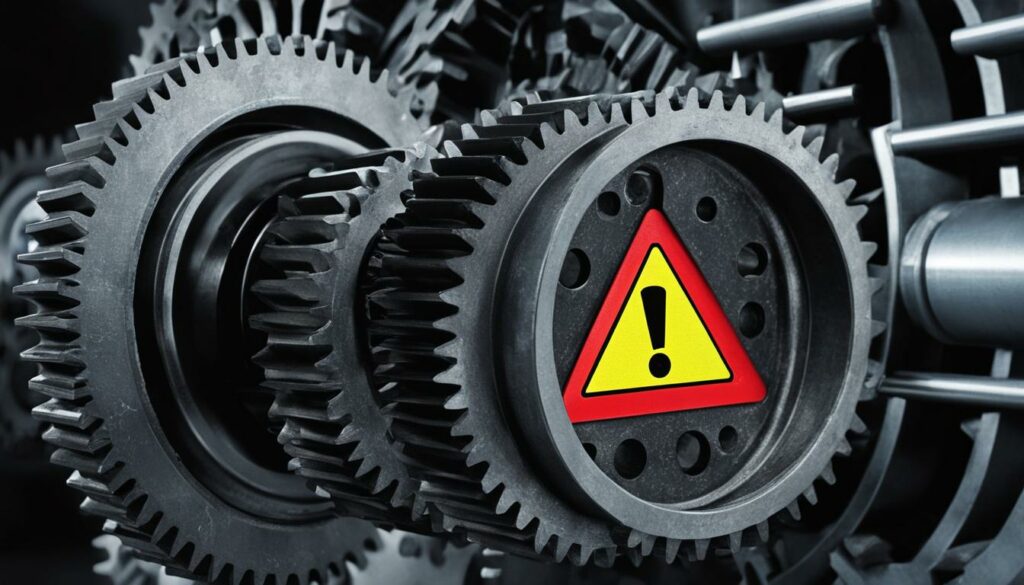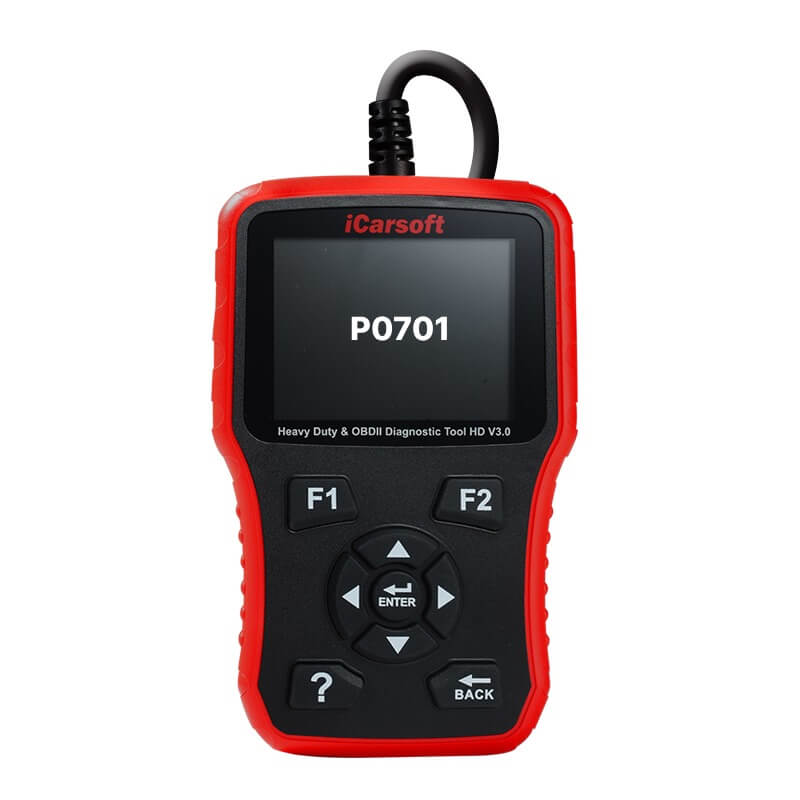P0701 – Transmission Control System Range/Performance
POSTED IN pcodes
Welcome to our comprehensive guide on the P0701 diagnostic trouble code for the Transmission Control System Range/Performance. If you’re experiencing issues with your transmission control system, this article is here to help. We’ll explain the meaning and severity of the P0701 code, discuss common causes and symptoms, and provide diagnostic and repair solutions to get your vehicle back on track.
Key Takeaways:
- Understanding the P0701 code is essential for proper diagnosis and repair of transmission control system issues.
- Common causes of the P0701 code include low transmission fluid levels, sensor malfunctions, and circuit problems.
- Symptoms of the P0701 code may include erratic shifts, failure to shift, and decreased fuel efficiency.
- Diagnosing the P0701 code requires access to wiring schematics, diagnostic tools, and rigorous testing.
- Repairing the P0701 code may involve fixing faulty wiring, replacing components, and ensuring proper fluid levels.
Understanding P0701 – Transmission Control System Range/Performance code
Diagnostic trouble code (DTC) P0701 stands for “Transmission Control System Range/Performance.” It is logged on vehicles with automatic transmissions controlled electronically when the powertrain control module (PCM) detects an issue within the transmission control system. The severity of this code can vary depending on the cause of the problem.
The P0701 code indicates that there is a range/performance issue within the transmission control system of the vehicle. This code is typically triggered when the PCM detects that the actual gear position does not match the expected gear position based on input from various sensors and switches within the transmission control system.
Common symptoms of a P0701 code include:
- Erratic shifting or inability to shift gears
- Harsh or delayed shifting
- Deteriorated fuel efficiency
To diagnose and fix the P0701 code, it is important to follow a systematic approach:
Buy tested tuning file for Adblue / EGR / DPF / Adblue off now!
- Use an advanced scanner or OBD-II code reader to retrieve the stored fault codes from the PCM.
- Inspect the transmission control system wiring and connectors for any signs of damage, corrosion, or loose connections.
- Verify the transmission fluid level and condition. Low fluid level or contaminated fluid can cause shifting issues and trigger the P0701 code.
- Test or replace any faulty sensors, switches, or solenoids within the transmission control system.
- Perform a thorough road test to ensure that the code has been successfully resolved.
Example: Common causes of P0701 code
| Cause | Description |
|---|---|
| Low transmission fluid level | Lack of fluid can cause insufficient hydraulic pressure, leading to shifting problems. |
| Malfunctioning transmission sensor | A faulty sensor can provide incorrect data to the PCM, resulting in gear position inconsistencies. |
| Transmission control system circuit problems | Issues with the wiring or connectors can disrupt the communication between the PCM and the transmission control system, causing the range/performance problem. |
The severity of the P0701 code depends on the underlying cause. If left unaddressed, it can lead to further damage to the transmission and drivability issues. It is crucial to diagnose and repair the code promptly to avoid costly repairs in the future.

When it comes to the transmission control system, it is always recommended to seek professional assistance if you are not experienced in automotive repairs. They have the knowledge, tools, and expertise to diagnose and fix the issue accurately.
Common Causes and Symptoms of P0701
When encountering the P0701 code, several common causes and symptoms may help diagnose the issue at hand. Understanding these causes and symptoms will assist in troubleshooting and resolving the problem effectively.
Common Causes of P0701
There are several possible causes for the P0701 code:
| Cause | Description |
|---|---|
| Low transmission fluid levels or low-quality transmission fluid | Inadequate fluid or poor quality transmission fluid can lead to improper functioning of the transmission control system. |
| Transmission sensor malfunction | A malfunctioning sensor can provide inaccurate data to the transmission control system, causing performance issues. |
| Transmission control system circuit problems | Faulty circuits within the transmission control system can disrupt communication and lead to code P0701. |
Symptoms of P0701
Recognizing the symptoms associated with code P0701 is crucial in identifying the issue:
- Erratic transmission shift patterns
- Failure of the transmission to shift
- Decreased fuel efficiency
Experiencing any of these symptoms may indicate a problem with the transmission control system, requiring further investigation and resolution.
Diagnosing and repairing code P0701 will vary depending on the specific vehicle make and model. It is recommended to consult with a professional mechanic or follow the manufacturer’s troubleshooting steps to address the issue effectively.

Diagnosing and Fixing P0701
Diagnosing a P0701 code requires access to a manufacturer’s wiring schematic, a digital volt/ohmmeter, and an advanced scanner or OBD-II code reader. A mechanic needs to diagnose any other stored transmission-related codes first, visually inspect the PCM wiring and connectors, and retest the system.
Repairing a P0701 code may involve:
- Repairing or replacing faulty wiring, connectors, or components
- Filling the transmission fluid to the proper level
- Replacing any faulty solenoids, sensors, or switches
Proper diagnosis and fixing of the P0701 code require technical expertise and specialized equipment. It is recommended to consult a qualified mechanic or automotive technician to ensure accurate identification of the issue and appropriate repairs.
Conclusion
The P0701 code is a clear indication of an issue within the transmission control system. It is crucial to promptly and accurately diagnose the underlying problem and take appropriate measures to prevent further damage. By addressing the cause of the code, you can ensure the proper functioning of your transmission and avoid costly repairs down the line.
If you do not have experience in automotive repairs, it is highly recommended to seek professional assistance. Trained technicians have the expertise and specialized diagnostic tools to accurately identify and resolve transmission control system issues.
Remember, addressing the P0701 code in a timely manner can save you from potential transmission failures, costly repairs, and disruptions to your daily driving routine. Don’t hesitate to consult a qualified professional to ensure the longevity and reliability of your vehicle’s transmission.
FAQ
What does the P0701 code mean?
The P0701 code stands for “Transmission Control System Range/Performance.” It indicates that there is an issue within the transmission control system on vehicles with automatic transmissions controlled electronically.
What are the common causes of the P0701 code?
Common causes of the P0701 code include low transmission fluid levels, low-quality transmission fluid, transmission sensor malfunction, and transmission control system circuit problems.
What are the symptoms of the P0701 code?
Symptoms of the P0701 code may include erratic transmission shift patterns, failure of the transmission to shift, and decreased fuel efficiency.
How is the P0701 code diagnosed?
Diagnosing a P0701 code requires access to a manufacturer’s wiring schematic, a digital volt/ohmmeter, and an advanced scanner or OBD-II code reader. A mechanic needs to diagnose any other stored transmission-related codes first, visually inspect the PCM wiring and connectors, and retest the system.
How is the P0701 code repaired?
Repairing a P0701 code may involve repairing or replacing faulty wiring, connectors, or components, filling the transmission fluid to the proper level, and replacing any faulty solenoids, sensors, or switches.
Can I fix the P0701 code myself?
If you are not experienced in automotive repairs, it is best to seek professional assistance to properly diagnose and address any underlying issues with the transmission control system.


